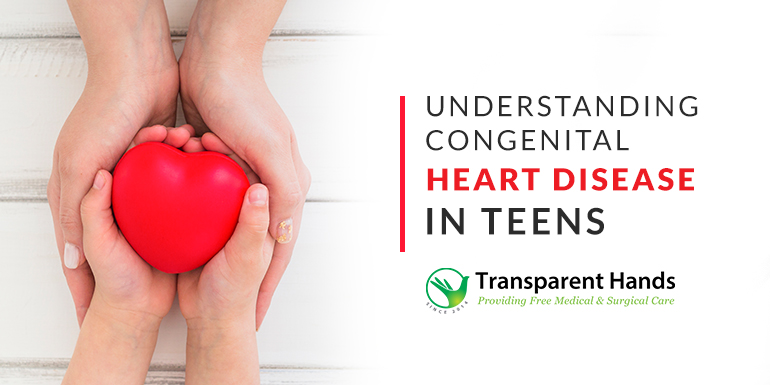Understanding Congenital Heart Disease in Teens

Introduction
The term congenital heart disease describes all the anatomical or physiological abnormalities of the heart that occur during the fetal or embryonic stage. Understanding congenital heart disease in teens and these abnormalities can also occur due to maladaptation following delivery. The sufferings of those who have congenital heart disease are very different from other heart patients. For them, it is a lifelong affair. Congenital cardiac diseases manifest themselves as a person grows up with a slower-than-normal growth rate. The developmental processes tend to get slower in patients who have a CHD issue. The best way to have a deep insight into this tragedy is to understand congenital heart disease in teens.
Congenital Heart Disease in Teens
Individuals within the age range of 13-19 are deemed as teenagers in society. If a kid had a heart-related anomaly, this is the time by which this anomaly is going to create trouble. The pediatric environment in which a child is kept and monitored becomes less appropriate for taking care of a teenager. Hence, congenital heart disease in teens requires a transition from pediatric to adult medical services. We will look at some of these in upcoming lines, but for now, let’s get one thing straight. The years of teenage are significantly important for physical and emotional development. Itis likely to make them more annoyed with their lives. Hence, these teenagers with severe chronic health issues must be carefully managed by the clinicians.
Incidence of Congenital Heart Disease in Teens
We said this before, but a lot of diseases fall under the broad term of CHD. To understand the prevalence of congenital heart disease in teens, it is critical to have a look at the statistics. Research tells us that CHD affects 1 percent of live-born babies. Out of those, 92 percent of these successfully make it past the age of one year. Half of these patients require intervention to achieve this life milestone. Childhood deaths are primarily because of premature birth, chromosomal defects, and heart lesions.
Outcomes of Congenital Heart Disease in Teens
We will discuss how congenital heart disease in teens is managed and treated these days. But first, let’s have a look at the effects of this extremely dangerous group of heart disease. We can classify the seriousness of CHD into three categories. These are mainly mild, moderate and severe. This classification isn’t followed by extremely strict guidelines or rules. Rather, it is characteristic of the stress on the cardiovascular system. This classification also gives us a clue as to what can be expected in the future, regarding heart health. Long term complications include heart murmurs, arrhythmias and heart failure. Congenital heart disease in teen demand a clinical review. Those falling in the mild category need it after 3 years and those in moderate after 1 year. The ones with severe lesions need it after 3-4 months.
Management of Congenital Heart Disease in Teens
There are various management practices, implemented differently for unrepaired and repaired these lesions in teens. If it is the left to right shunt lesions, it is customary to refer for closure in case there are heart enlargement symptoms. Right heart lesions are suggestive of the anomalous tricuspid valve. These are just some of the common diseases from the CHD group, found commonly in the teenage population. Some other conditions which require a regular cardiovascular review include long QT syndrome and ventricular arrhythmias. Treatment of congenital heart disease in teens can be either palliative or corrective.
Adolescent Healthcare & Congenital Heart Disease in Teens
Like we mentioned before, a transition from pediatric to adult healthcare must be made in the case of CHD teenagers. This transition of care must start early in the teenage years and should continue right up to young adulthood. Several guidelines must be followed in this regard. This set of rules can also help manage congenital disease in teens.
1- Services must complement the age group they are being provided to.
2- Teenagers have a lot of questions, the adult healthcare facility must try to satisfy these curiosities.
3- Patient autonomy is a very tricky concept, but it should be facilitated at all costs.
4- Flexibility is the key to the whole process of managing youth with chronic heart disease.
Conclusion
To sum it up, these can be detrimental to their upcoming lives. Not only it poses problems for the patient, parents and the clinicians also have to share this burden. But if regular cardiovascular reviews are conducted and transition of care is made at an appropriate stage, there is hope. May the heartbeats of little ones never flutter again!










Leave Your Comments